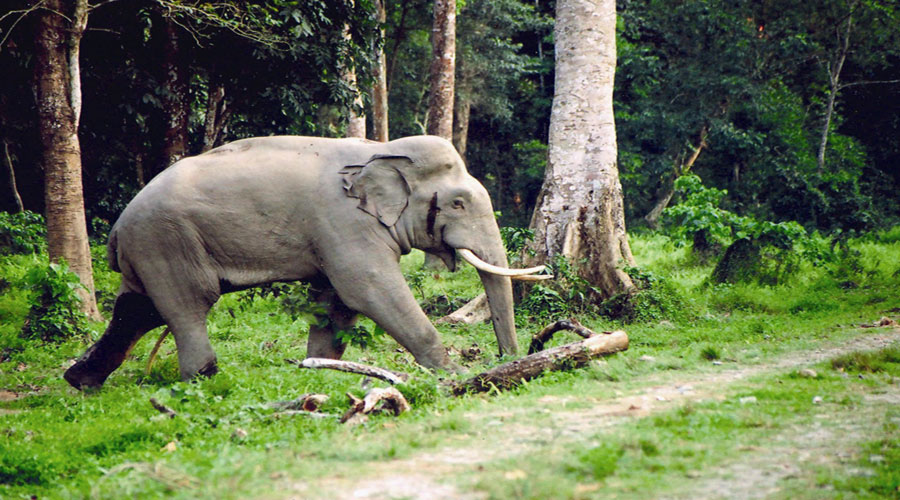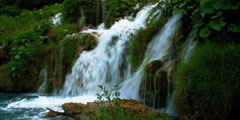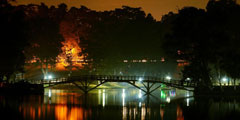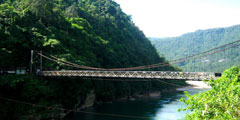
About Dooars

Jaldapara is a paradise for bird watchers. It is one of the very few places in India, where the Bengal Florican is sighted. The other birds to be found here are the Crested Eagle, Pallas's Fishing Eagle and shikra, besides Jungle fowl, peafowl, patridges, Bengal Florican and lesser Pied Hornbill. Python, Monitor Lizards, Krates, Cobras, Geckos and about 8 species of fresh water turtles have also found here. Many of the animals are endangered like - asiatic one-horned rhino and elephants in Jaldapara Wildlife Sanctuary.
Elephant safaris through the Jaldapara forest in search of wild animals, is a memorable experience. Numerous watch towers here allow you to take a real close look at wildlife. Moreover the scintillating light and sound show at Jaldapara guest house adds a wild thrill to your
Buxa Tiger Reserve
Buxa National Park, is now in Alipurduar district, was set up in the year of 1982-83 at the north eastern corner of West Bengal bordering Bhutan and Assam. With an area of 759 sq km this picturesque reserve with its prodigious Terai, Bhabar as well as Hilly landscape, crisscrossed by numerous rivers and their tributaries, presents a breathtaking landscape. Buxa is rich with bio-diversity and has a great collection of rare orchids and medicinal plants. Because of inaccessible terrain some parts of Buxa hills in the Sinchula range are still unexplored. The veritable flora and fauna of these wet forests attracts tourists and nature lovers every year.
Between Buxa Tiger Reserve and Jaldapara Wildlife Sanctuary, lies Chilapata Wildlife Sanctuary, the most important migration corridor of large herbivores such as One Horned Rhinos and Asiatic Elephants and an upcoming eco-tourism destination in Bengal.
Chilapata
Chilapata reportedly harbours 23 species of carnivores and herbivores, approximately 180 species of birds, 22 species of reptiles, several species of amphibians and a host of lesser fauna.
Major mammals recorded in Chilapata are Lesser Javan rhinoceros Rhinoceros sondaicus, Asian elephant (Elephas maximus indicus, Indian Bison or Gaur (Bos frontalis gaurus), Leopard Panthera pardus fusca, Lesser cats, Hog deer Axis porcinus porcinus, Cheetal Axis axis, Sambar Cervus unicolor niger, Barking deer Muntiacus muntjak vaginalis, Wild boar Sus scrofa cristatus, Rhesus monkey Macaca mulatta, Hispid hare Caprolagus hispidus.
18 species of amphibians including the recently-discovered Assam Painted Fog and Chilapata Forg(Minervarya chilapata sp.)have been recorded from Chilapata.
/p>
Tourism experiences and attraction
The Chilapata tourism circuit includes guided safaris to the Mendabari watch tower and KodalBasti forests. Day visits to Buxa Tiger Reserve, Jaldapara WLS and Khayerbari Leopard Rescue Centre are also possible.Numerous forest trails and walks are also a major attraction here. One can also enjoy a tea tour in the nearby Mathura tea estate and can as well have an excellent and authentic cultural experience by visiting the Rabha tribal community in their villages. Coachbehar heritage town is an hour-long drive, and an important part of the Chilapata experience.
Chilapata Jungle Camp
The Jungle Camp, with its rustic look and idyllic setting, is an abode for those who appreciate an authentic, intimate, educative and inspiring experience with the local nature and culture.While the Elephant Cottages on concrete stilts are made with brick, cement and wood in local style, the Bamboo Cottages are constructed with eco-friendly materials and have respectfully replicated the traditional architecture and design of the indigenous tribal houses.Food, served in a beautiful thatched dining with its four sides open to allow the guests to have an unobtrusive view of the surrounding nature, mainly consists of authentic local recipes, and prepared with fully organic ingredients sourced completely locally.
Responsible Tourism
The lush garden of the Jungle Camp which consists of several species of local plants, fruiting trees, flower beds, creepers and bushes, is a happy thriving ground of the birds and butterflies. To support studies on local species, the Jungle Camp runs an amphibian centre and maintains a frog pool within its premises. To protect the fluttering beauties of Chilapata, the Jungle Camp has recently introduced a butterfly garden in its complex under the guidance and supervision of experts who have trained a group of local youths to maintain it and safeguard the butterflies.
As a part of its environmental commitment, the Jungle Camp is slowly converting to renewable energy and has just installed a bio gas plant to meet the requirement of cooking fuel for its kitchen.
On request of our guests, a group of local folk artists often display their colorful performances in the evening at the Jungle Camp premises and elevate the ethereal experience to an unreachable height with their traditional songs, dances and percussion.






Jaldapara Wildlife Sanctuary